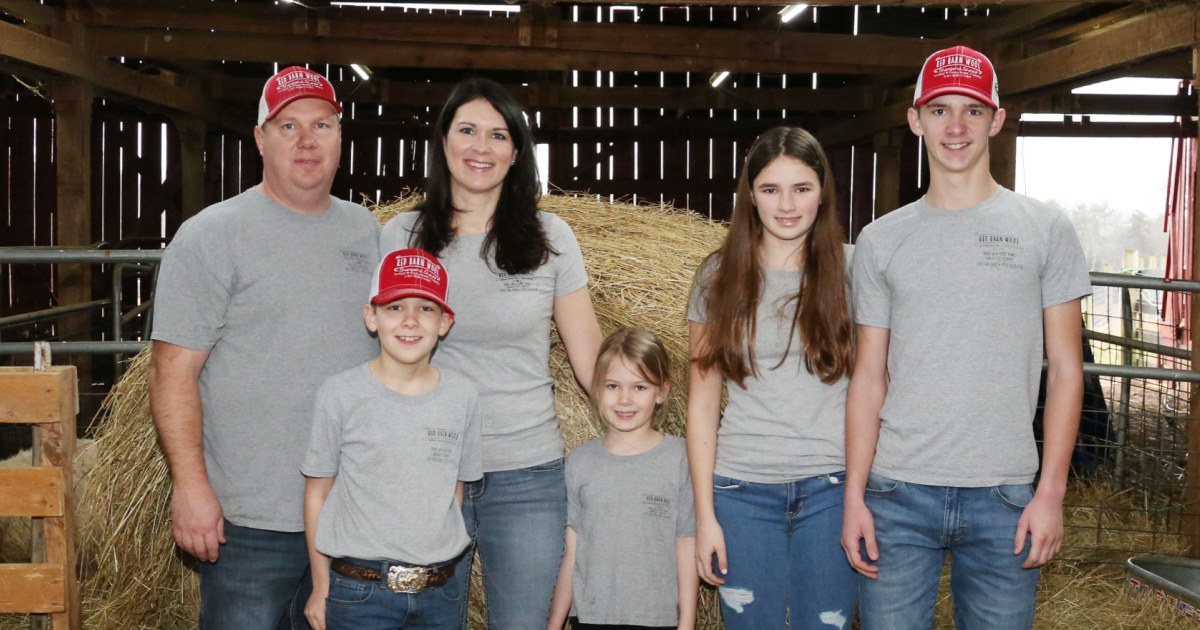Living in Sheep Country
Posted on Feb 21, 2023
There was a time when the number of sheep in this country rivaled the size of the nation’s buffalo herd which roamed the west and western plains. And while those days have long passed, the importance of sheep production, which is found in all 50 states, is still important to the agriculture industry, and nowhere is this more evident than in Pulaski County at the Red Barn Wool farm of Brian and Janella Miller.
The couple has taken a passion for the animals and turned it into a successful agri-business on their 50-acre farm.
“We have register Shetland sheep and we focus on raising registered breeding animals; that's our priority for our farm and our flock," said Janella. "Then, we cull the animals that we don't sell as registered and sell them as meat or they go to an exotic sale in Cookeville, Tennessee where unique animals are sold for a variety of purposes including petting zoos.”
The Millers also sell about 250 pounds of wool sheared from their sheep each year and make wool dryer balls to sell, as well.
The couple both have farming backgrounds, most of which involved family tobacco farms they helped with while growing up. And the farm they have now was once a tobacco farm. However, the Millers began their farming experience with springer dairy heifers and a few chickens.
“As the dairy industry started taking a nosedive, we decided we'd transition to beef,” Janella said. “But I had asked for some sheep for my birthday one year and Brian bought me a ram and two ewes.”
That gift is all it took to begin a transition into one of the largest sheep operations in the region, and one of the largest Shetland flocks in the country. As they grew their flock the Millers took the time to study the breeds and learn as much as they could.
“And we had to learn a lot,” Janella said. “We used the resources we have here such as University of Kentucky (UK) extension experts along with other shepherds not only in this state but in other places. With that, I found that I really liked the Shetland breed. They are a small breed, and they got a lot of personality.”
In addition to UK, the Millers also utilized the Southeast Kentucky Sheep Producers Association (SEKSPA), of which Janella is now a board member.
“There are several of us in Pulaski County who have joined SEKSPA, and it's a wonderful network,” Janella said. “One of the greatest resources we have found, through our time raising sheep, has been other shepherds and talking to each other. We have learned so much and, in turn, taught others through our experiences.”
Kentucky’s sheep industry is one of growth right now, said Kelley Yates, Executive Director of the Kentucky Sheep and Goat Development Office.
“The trend in Kentucky has been that both sheep and goats are growing, especially with it being super dry out west for several years in a row,” she said. “A lot of those sheep have made their way here, so we are seeing that growth, whereas other states have seen a decrease in numbers.”
One of the sustaining facts for growth in this and other livestock sectors is because of the good pastures found throughout the state.
Kentucky Farm Bureau Federation's Livestock and Environmental Field Specialist Renee Carrico said while most livestock here relies on some type of hay, especially during the winter months, the state’s grasslands are a real bonus for producers.
“Our forages are generally in good condition because our producers take such good care of their pastures," she said. "The livestock really become a value-added product of our grasslands because of the care that's taken to continually improve our pastures and hay fields."
The Millers utilize a rotational grazing method in much the same way as cattle producers, for several reasons.
“There are a lot of good reasons for this practice such as to break down the cycle for parasites, for the health of the forage itself, and also their feet,” Brian said. “We don't trim hooves. We keep rock around where they go to water, and just keep it in different pastures to manage their hooves.”
Because of the size of their sheep, the Millers, as do many other sheep producers, can utilize smaller acreage for grazing purposes making these animals attractive for smaller farms.
Yates said that sheep and goat production can also be something young or beginning farmers can take advantage of.
“I see a lot of couples who are between 30 and 50, getting into this whether they have inherited a farm or two they've decided to look for a farm to buy for the first time,” she said. “And most of these folks are part-time farmers so sheep and goats are a really good way to get started.”
The Millers both work off-farm jobs in the county school system; Brian as an athletic director and Janella as an agriculture teacher. She also serves on the Pulaski County Farm Bureau board. And with four children actively involved in extracurricular activities, their sheep farm fits the bill for a busy family.
“We love our school and everything about that part of our lives,” Brian said. “And it works well with all we have to do on the farm, as well.”
Janella said their children have grown up around the sheep and all the activities that go with the farm, as busy as they are much of the time.
“They love the farm and are a big part of what we do here with the sheep,” she said. “This is a wonderful lifestyle and I really wouldn’t have it any other way.”
Comments